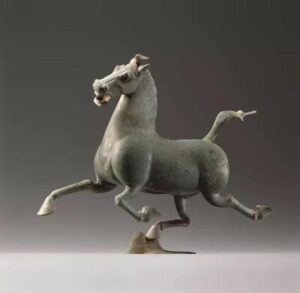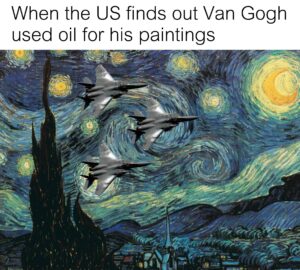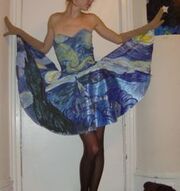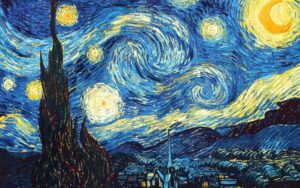

The first image is the picture of a famous bronze ware in China. This bronze ware named “Copper Flying Horse”in English was from the Eastern Han Dynasty which is about 1800 years from now. It was found in a grave of a general lived in that period. This artwork shows us there is a running horse whose one foot rests on a flying swallow. It seems that this horse is flying on the sky. And this picture of it was taken in Gansu Provincial Museum. Through this picture, its metallic luster shows me the honor of that great general. The muscle of this horse indicates us that it is a warhorse. Maybe 1800 years ago, it accompanied its ower to fight for their kingdom to agasint enemy. It is impossible for a horse to fly in the sky in the real life. But in the imaginary world, it can. Its flying pose shows the best wishes of the ancients at that time—-people’s intense curiousity to the sky. They wish they could be a flying horse to explore the unknow in outer space. Take advantage of the invention of camera, I could see such an outstanding artwork on my screen. By watching the introduction video of it, I could follow the lead of camera to appreciate its detail and know so many backgrouds and story of it.
The second image is the symbol of Chinese tourism inspired by this extraordinary artwork. Chinese National Tourism Administration use the image of “Copper Flying Horse” as our symbol for three reasons. First, it symbolizes that Chinese tourism is full of glory, with bright futuer. Secondly, horses have played a very important role in China from ancient times to the present. With the meaning of endeavor, tourists can enjoy travelling in China. Thirdly, its peerless status in broze also symbolizes Chinese splendid cultural history for thousands of year. And this logo gives “Copper Flying Horse” a new meaning. Its a kind of reproduction of this artwork, it not only conveys the ancients best wishes for human’s exploration, but also expresses the desire for the better future of Chinese tourism.






